Video Review: Sony PXW-X70 camcorder
Sony’s PXW-X70 camcorder might look like their top-end consumer model (the CX900) with a handle on top but it’s much more than that. The X70 is substantially redesigned in hardware and firmware to create a true pro camcorder, albeit in miniature.
That redesign is first evident when you look at the right hand side where the hand strap is – and notice the extra bulk which not only makes for a chunkier hold but on the back accommodates an HD-SDI port, full size HDMI and a toggle to flick through the menus. To the left, everything looks much as it did on the CX900.
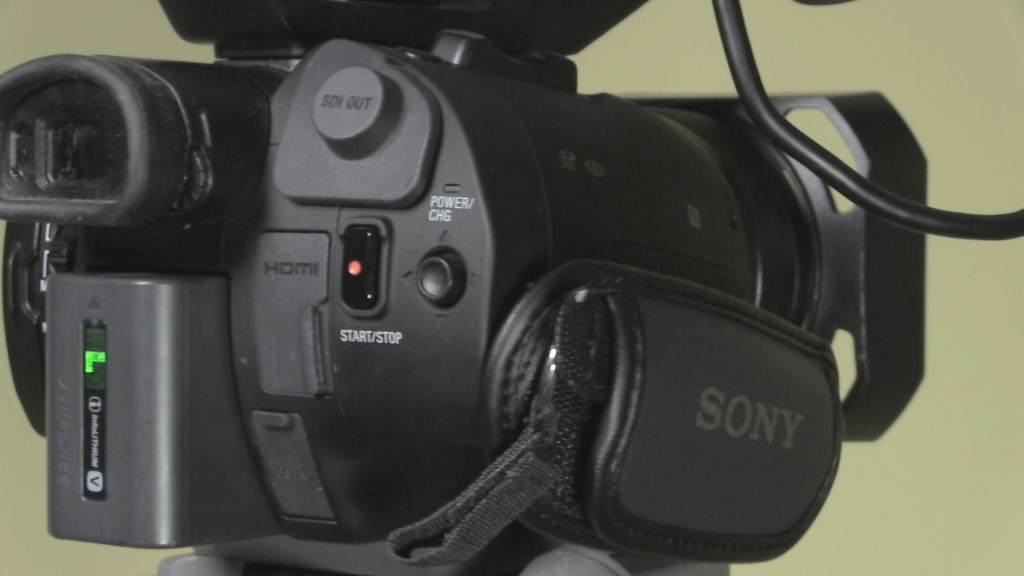
At the front is a 12x optical zoom lens from Zeiss, with a removable – and therefore loseable – cap. The lens opens to f2.8 when the zoom is wide but ramps down to what the camcorder says is f4 when zoomed in. A digital crop gives an option of 24x zom and there’s a button for further, interpolated digital zoom too – which we don’t recommend.
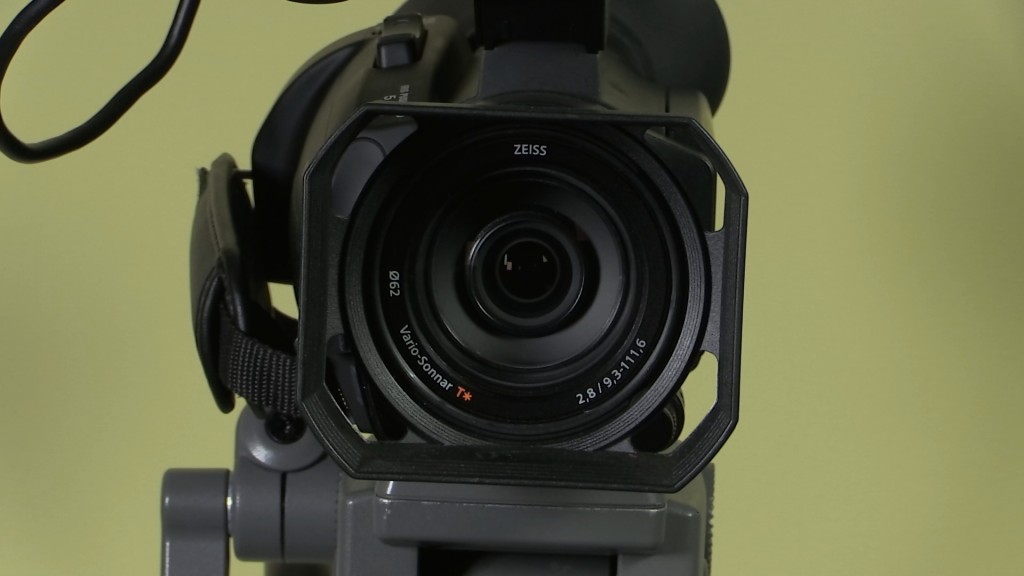
The single large control ring at the front changes either focus or zoom, selectable by a switch, and you have the option of toggling auto or manual focus with a button here too.
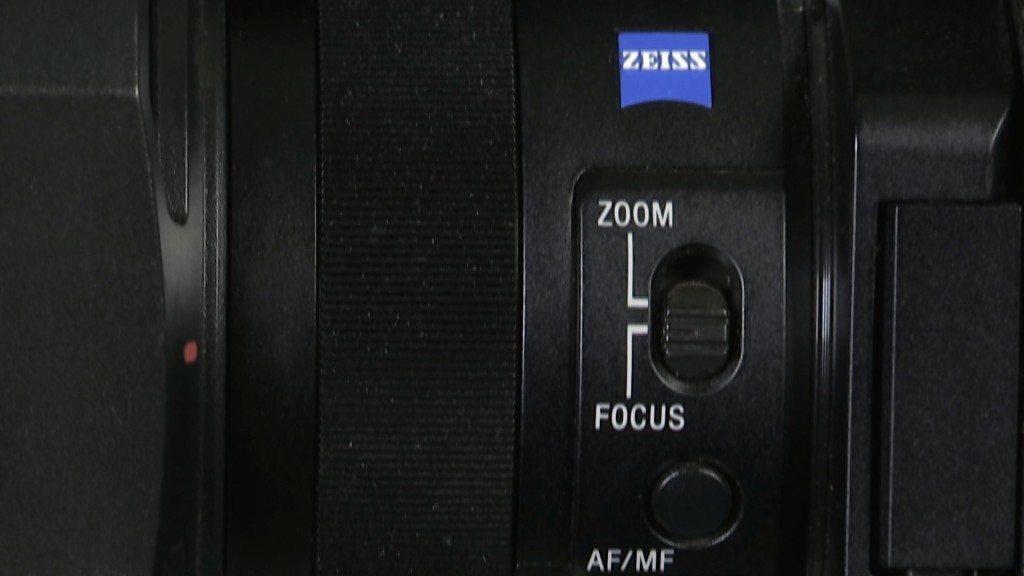
Three buttons determine which aspect of exposure you want a small thumbwheel at the front to control, any of them, all or none can also be put into automatic mode.
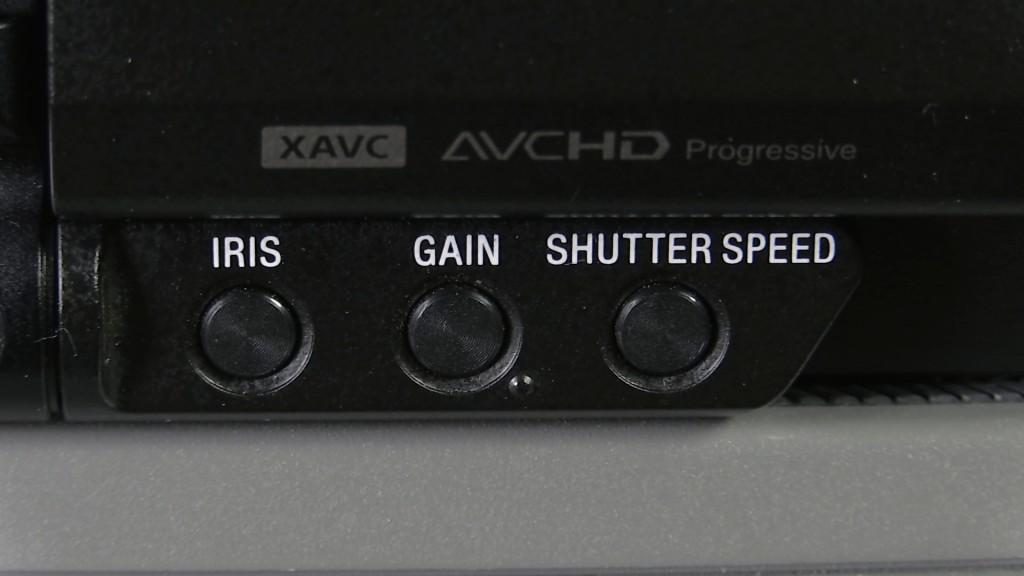
Unusually for this size of camcorder, genuine neutral density filters can be switched in by a small toggle on the back; a button above that activates manual or automatic exposure, though the NDs always require your input.
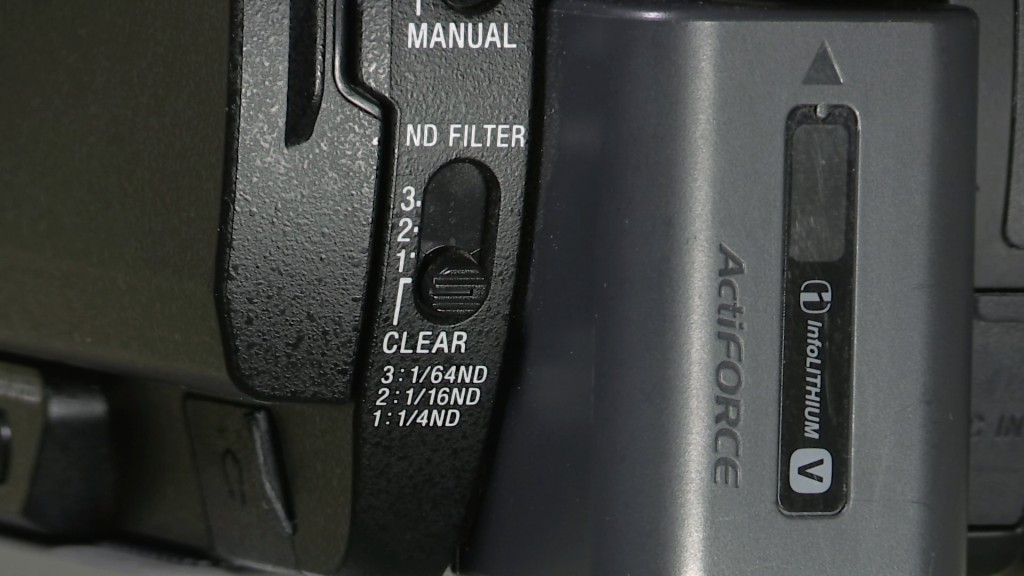
Audio is at the usual pro level with two balanced XLR inputs on the handle, controllable in the usual ways by a panel of switches and dials on the other side. A 3.5mm unbalanced mic jack sits just behind the lens, with a USB-style socket providing assorted A/V output and, via a combination of additional cables and adapters, remote control. Selection of either internal, unbalanced or handle audio is made through the menus. Monitoring is via a 3.5 mil headphone jack near the back.
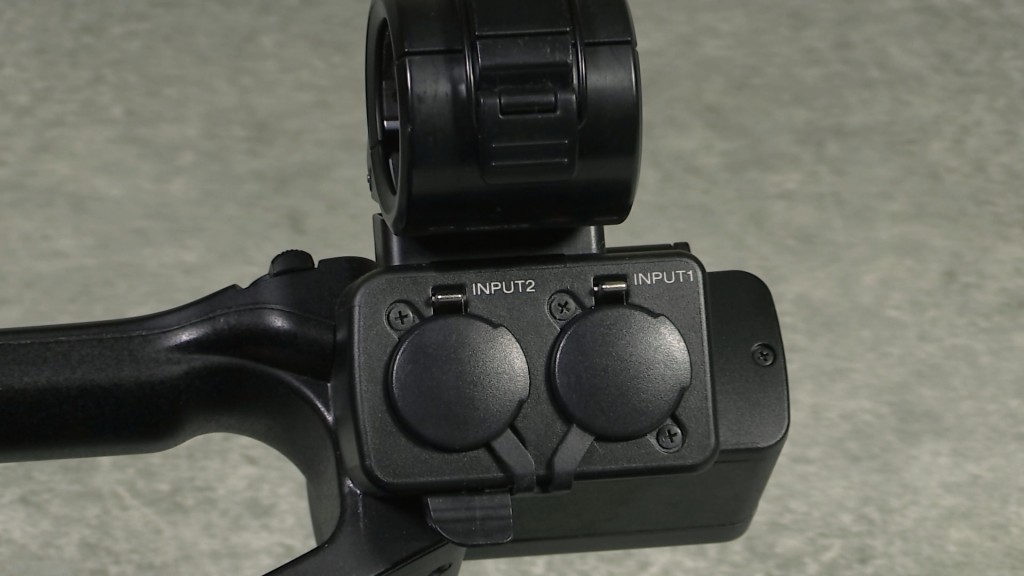
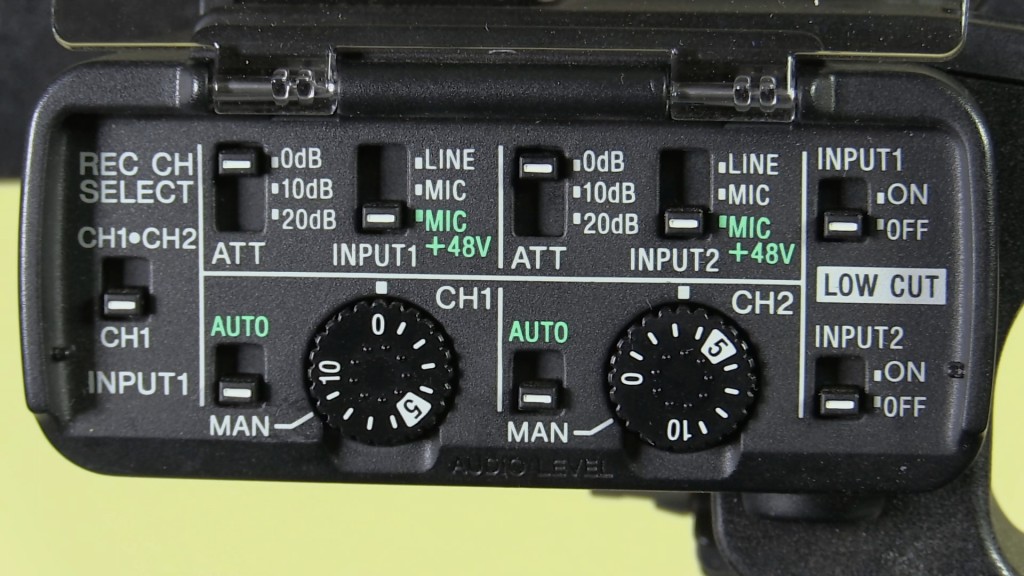
Other functions on the handle include the usual record button which can be locked to prevent accidental use, a microphone mount, a front cold shoe and a rear screw thread for which an adapter is supplied to convert it to a rear cold shoe. The tiny handle zoom rocker can be deactivated or have fixed or variable speeds.
Should you wish to go into stealth mode with the X70, the handle detatches quickly and easily by unscrewing two knobs and sliding the assembly backwards. Refitting it is the exact reverse. Power comes from an NP-FV70 battery, which Sony say gives two hours recording.
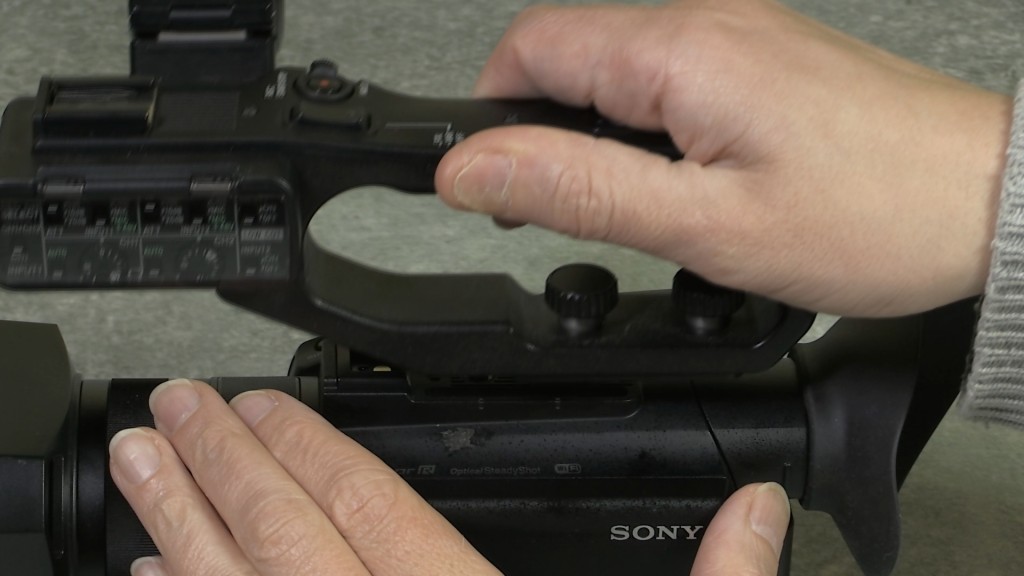
Behind the flip-out screen lies a selection of buttons, three of which are assignable to your preferred functions via the menus. Two more lie either side of the usefully large zoom rocker, though they’re slightly awkward to actually reach with your fingers, particularly the front button which by default is auto iris, without bracing the camcorder with your thumb. A sixth assignable button is slightly awkwardly placed to the right of the lens.
Dual SDXC card slots provide for dual card recording as a safety measure, or card to card recording for longer filming durations. Files are saved either in AVCHD at up to 50p – 60 in NTSC countries – or Sony’s XAVC format which on the X70 is a 4:2:2 colour, 10 bit variety that, at the time of writing, only Edius and Premier Pro will read natively without transcoding.
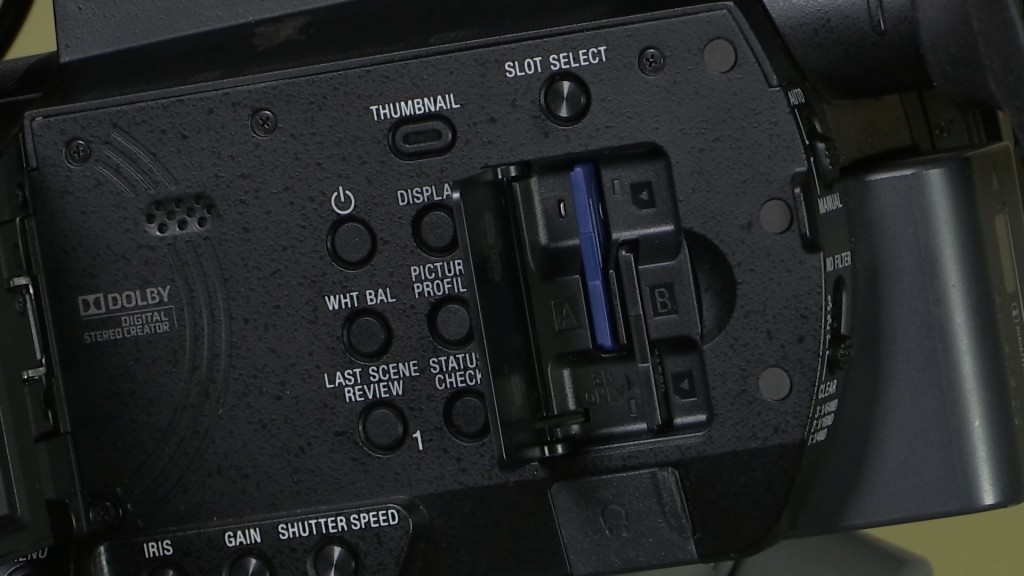
The viewfinder pulls out to engage it and flips up for viewing with the camcorder automatically switching the flip-out screen off when you put your eye up the viewfinder. Speaking of which, the OLED screen is clear and displays plenty of relevant information; you can toggle and configure various parameters in the menus so as to show what you prefer such as on-screen guide markers, audio meters and so on.
The usual range of visual aids including a histogram, zebra bars at two levels, and peaking in various colours are provided and can be toggled on and off via the assignable buttons if you wish. You can also clear the display of icons so as to actually see what you’re filming which can be helpful!
The menus also provide a wealth of customisable and settable options at a level commensurate with this type of pro camcorder, from white balance presets to timecode preferences, WiFi control settings and six picture profiles each of which gives a decent range of tweaks from black balance, gamma settings and knee point curves to colour recording modes and modifications to the colour profiling.
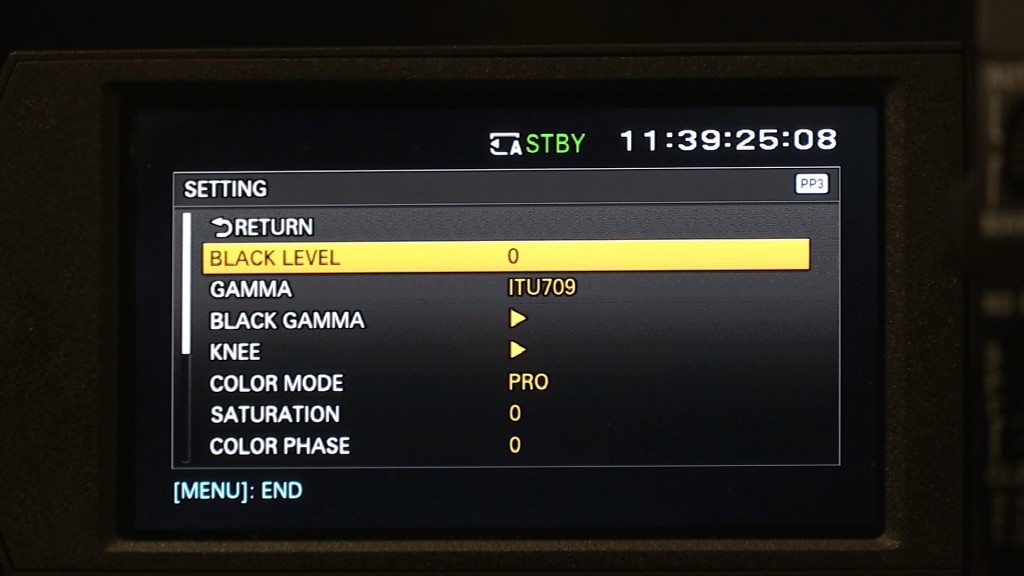
Despite the camcorder’s tiny size, we felt it rather needs a swivelling handle since it’s slightly front heavy and holding it level requires an awkward twist of the wrist backwards unless you’re jamming the camcorder up flat against your body to hold your wrist vertical which – unless you’re using the eyecup – you won’t be and for many, the screen is easier to use than the eyecup. Sony put swivelling handgrips on their EX1R and it’s a shame they haven’t got one here.
So what about the picture quality, the zoom and so on? Our video (above) includes a selection of test shots, captured in AVCHD but remember the compression of viewing this over the Internet renders any pixel-peeping a waste of time. What we can say is that the images are clear and crisp and it’s possible to create looks in camera with the profile settings that make this very usable. Once we’ve got editing software that can actually read the 10-bit 4:2:2 XAVC codec, the amount of picture grading that will be possible should be extensive.

You can get a shallow depth of field on this camcorder with judicious use of the zoom and pulling a rack focus is possible but when you’re zoomed in, the focus ring needs a lot of turning to actually achieve anything unlike when you’re zoomed out, so prepare to potentially wobble your camera with all that twisting as you try to do the shot.

There are two stabilisation modes, other than Off; Active is strongest but you lose a slight degree of width on the lens when it’s activated. Standard Mode is good enough for standing still wide shots, though Active again is even better. It’s all electronic, using the 20 megapixels on the sensor to smooth out the image and it works well. The effect is particularly pronounced when zoomed in, whereupon standard mode does a reasonable job but Active holds it rock steady even when you’re zoomed in using the so-called Clear Image Zoom (that’s the function that crops into the sensor’s 20 megapixels to give you an effective 24x zoom). Likewise, Active stabilisation transforms an otherwise unusable walking shot into a smooth piece of video.
Unlike the CX900 camcorder, it is possible to activate stabilisation without switching on Clear Image Zoom and thereby degrading the image a little.
Image quality using the 24x “Clear Image Zoom” is good, certainly acceptable but not as sharp as when you merely use the optical zoom. Crashing in so as to get focus is never as fast on these little camcorders as we’d like but it’s OK and if you want to do an artistic, atmospheric slow zoom in then either the main rocker, or the handle zoom can achieve this.
Finally, the issue that everyone always wants to know about: low light performance. The one inch sensor should give great results but that’s compromised slightly by the f-stop only going to 2.8 at best. Nonetheless, because of its very clean electronic gain, the X70 is clearly the king of small camcorders in dim conditions.
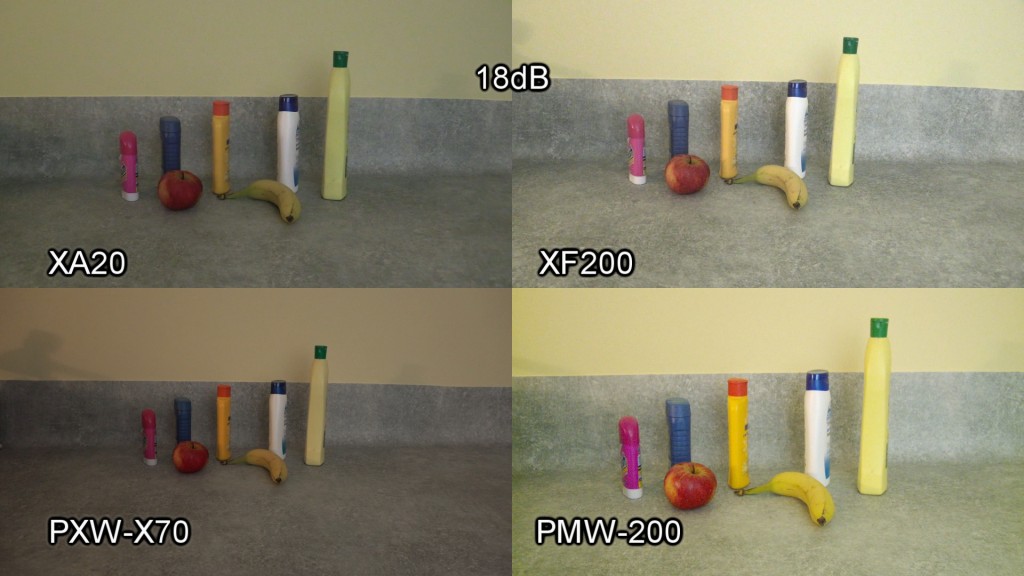
In conclusion we like the PXW-X70. Despite a few operational niggles it is easily the best compact professional camcorder on the market and it’s due to get a 4K firmware upgrade next year, albeit at a cost. If our money was between this and a Canon XA25, sorry Canon – the Sony gets it.
If you’d like to buy a PXW-X70 after watching this, please would you go via our Amazon link? That way we get a small commission which helps to keep this site going. Thanks. The link is http://amzn.to/1qN7s21
In addition to the video above, here’s our Editor’s take on the new camcorder:
Love your site, Love your detailed attention to reviews.
Re: PXW-X70, Not sure why you’re so bugged by the fact that the camera turns on when you open the side door. Why else would you open it except to shoot or play back? I loved that feature on the 900 as I kept it closed to save battery but when I wanted to shoot quickly – opening of the door made it VERY easy and fast and rarely missed the shot.
The lack of a proper lanc port is VERY annoying but I did find a zoom control with 1 cable adapter that worked, just ok.
Well, it’s just my opinion, it doesn’t mean everyone else will find it annoying. An example of when I’d not want it on would be when I was taking the SDXC card out (or putting one back in) to transfer footage to the PC for a start. I wouldn’t mind if it powered down / up with the door AFTER I’d switched it on manually but once I’ve pressed OFF, I expect it to stay off! And yes, you can cobble cables together to make a remote but what a nuisance!
I also open it to remove the SDcards. so it is silly to have it power on when you open it.
Great review! I’m considering upgrading my Sony z5 with this new camera. I like that it’s smaller in size which is great for weddings, plus 2 card slots. My question is: Which external microphone would you recommend ( budget around £150)
Thank you.
You mean as a top-mic to mount on the camcorder? Almost certainly an Audio Technica AT875R which is about £130, gets good reviews and is nice and short too so it’s the right size for an X70. You’ll want to budget extra for a Rycote windjammer on it of course and that’ll take you over your budget but you’ll need it.
You could also look at a Rode NTG1 but they’re about to bring out a new NTG4 which may be even better (not sure about price on that one yet though)
Always nice reviews on your website. Thanks for all the info. Do you know wether the FDR-AX100 (still) has the same issue as the CX900 with respect to the inavoidable swithing on of clear image zoom when stabilisation is set to ‘active’. Do you plan a review on the FDR-AX100?
Thanks.
Bert S
The two cameras are identical except in that the AX100 also offers 4K so the issue is the same with respect to the clear image zoom. We won’t be doing a review of it separately because they’re so similar. Thanks for the kind words about the website, cheers.
Thank you for the high quality reviews! Tubeshooter is the first place I look when researching a new video product. It has been almost a year and a half since the Sony X70 review. Are there any updates that you would like to make to the review? I like the compact form factor of this camera and currently have it on the top of my list of purchase options.
I think it remains the top compact camcorder at this end of the market. The only new thing was the introduction of the 4K software upgrade and only you can know if you need it and if it’s worth the price to you.
I wonder what’s going on with you.
Nothing new for almost an year now.
Everything is fine?
I enjoy so much your work.
Hello. Thank you. I have recently posted up some fresh “news” items, on the home page (eg about the new Sony Z90 and Canon’s XF400) but I have not done any video reviews for a long time because there hasn’t been much in the “prosumer” line for me to look at. I am going to try to borrow the Sony for a review though so stay tuned :-)